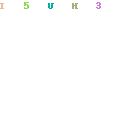Commerce is no longer considered vulgar, nor is genteel poverty an ideal
It was almost exactly 30 years ago that I moved for 2 years to Calcutta as a young mother. With our baby son looked after very ably by a very old-fashioned ayah—who brooked no interference from rookie mothers—and an always-busy husband, I took to exploring our south Calcutta neighbourhood. That meant long walks down streets whose houses looked singularly drab. The high point of my daily jaunt was a double egg-double chicken roll from Campari.
Despite it being lovely, staying home (I was taking a break from work) was not very pleasant as interminable power cuts made air conditioners redundant. They tended to die on us just as the baby nodded off to sleep. There was no chance of escaping to a cool mall either: ‘AC market’ was a proper noun (located on Camac Street) rather than an expected facility. Inverters, in fact, were a Calcutta necessity long before Delhi knew of them or needed them.
With the 1991 ‘liberalisation’ budget just about announced, cola and sodas were still brought home from Calcutta Club in the family Ambassador car. Decent pizzas were only available in tiny eatery near the riverbank. Drawing money from the bank meant half a day gone; ditto paying (landline) phone bills. With no traffic lights, endless waits made appointments—for work or leisure—highly variable. Not that anyone cared, as work was minimal too.
You might wonder when the rest of India was just as bad, so why single out Calcutta? Because Delhi—where I’ve spent most of my life—at least tried to speed up things in the bad old days. Our bank had a teller system with index card, to reduce waiting time, for instance. But Calcutta was more than willing to amble on at its own pace. The more Calcutta inexorably grew on me in 1991-93—yes, it did— the more I despaired its apparent death wish.
Now, as I walk round in 2021—mask in place, sanitiser in pocket—change is finally visible. It is less than in other cities of comparable size, but at least a new generation of West Bengal’s citizenry (I cannot confine myself to only Bengalis) appear to finally want to become like the rest of India. And although too many old houses are being knocked down for small apartment blocks, at least neither old nor new are drab: most have fresh coats of paint.
A lively, well-travelled niece texted me last week that she and her mother were out walking round Hindustan Park—a stone’s throw from our house— taking in all the trendy boutiques and bijou cafes and eateries that have sprung up in that once-somnolent, bhadralok residential area. It has clearly become Calcutta’s Camden Town or Greenwich Village. It seems commerce is no longer vulgar, and genteel poverty is no longer the acceptable ideal.
As I stroll down my own area dodging potholes (some things will never change in India!) and snoozing dogs, I don’t only see scruffy jhalmuri, momo, roll and phuchka (golgappa/panipuri) stalls. There are small art galleries, a store with a selection of teas from northeastern India, chic hair and nail salons, even a café with chairs and tables on the sidewalk like a Paris bistro. And sneaker-wearing youngsters who are not talking about politics.
In the early 20th century, Bengal was the crucible of industry, a powerhouse of entrepreneurship, the mecca of intellectual achievement. The rest of that century saw it all being ground to dust. Finally in the early 21st century Bengal wants to get its mojo back. Hopefully neither past mistakes nor misplaced sentiment and skewed priorities will continue to hold Bengal back any longer. And by the way, Campari’s double egg-double chicken roll still rocks!
Disclaimer
Views expressed above are the author’s own.
END OF ARTICLE
Source: https://economictimes.indiatimes.com/blogs/SilkStalkings/the-rolls-are-still-the-same-but-calcutta-isnt/

